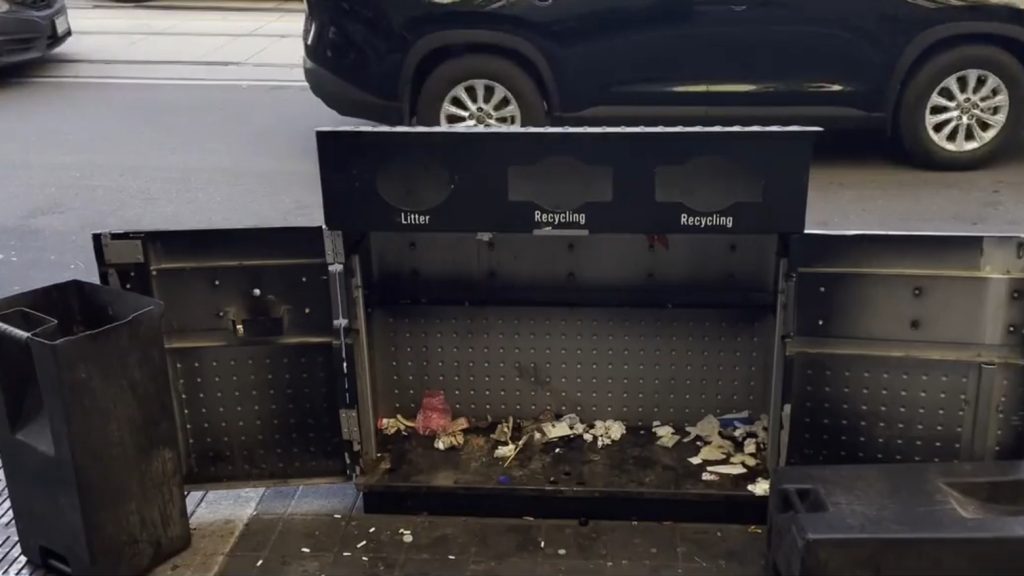Review: Apple’s Touch Bar a slippery time-saver
Posted November 17, 2016 2:00 am.
Last Updated November 17, 2016 7:04 am.
This article is more than 5 years old.
Laptops have undergone many changes over the years. They have become lighter, thinner, more powerful than we ever could have imagined when they were first introduced more than 30 years ago.
Over the course of time, mice have been replaced with pointing sticks, and eventually trackpads. Even keyboards have been modified to become more shallow as laptops continue to grow thinner. Yet Apple seems convinced there is still room for improvement. Enter the Touch Bar.
Apple considers the Touch Bar on its latest MacBook Pro to be an extension of the traditional keyboard. It replaces the row of function keys (F1 – F12), along the top of the keyboard with a customizable touch OLED strip. It’s easily the standout feature on the mid to high-end MacBook Pros, which is why this review will be focusing on Touch Bar, rather than performance changes over the entry model MacBook Pro which I reviewed a couple of weeks ago.
I first have to talk about the design of Touch Bar. Although it’s made from glass It doesn’t have a shiny finish. It’s matte black just like the rest of the MacBook keys. It almost looks like an extra long space bar situated at the top of the keyboard. However that changes when you turn it on.
Touch Bar can display millions of colours. Just how will look for you will depend on what application you’re using. It changes based on what program is open on your MacBook Pro. It’s also somewhat customizable, so you can change the icons you want to appear in that space.
When you first run your finger along Touch Bar you’ll be surprised as just how slippery it is. It doesn’t have the feel of regular glass. There is no friction whatsoever. Your finger glides effortlessly across the bar.
By default Touch Bar displays some of the basic tools and options. There’s display brightness, volume control, shortcuts to Launchpad, as well as a fast forward, rewind and play/pause button for music in iTunes. There’s even a shortcut to Siri, which is baked right into MacOS Sierra. But it doesn’t have to be this way … and that’s the beauty of Touch Bar … it’s customizable.
By opening up the Finder you can change the icons you see. A new window pops up letting you drag icons from the main screen onto the secondary Touch Bar. You can add Mission Control, Sleep, Mute or show desktop to name just a few. Or if you prefer, you can put sliders on the Touch Bar to control screen brightness or volume instead of the increase/decrease buttons.
An icon I added right away was screen capture shortcut. Instead of holding down Command + Shift + 3, I was able to save snapshots of my desktop with a simple tap of the Touch Bar. It won’t take long to figure out what shortcuts work best for you.
The true potential of Touch Bar doesn’t really shine until you begin to open up and use different apps. Remember, Touch Bar changes depending on the program you have open.
Let’s take a look at how Touch Bar changes depending on what apps you are using.
When you are in Mail, Touch Bar will display options such as reply, flag, delete, and move to. When you’re composing an email it will suggest address to send your email to (the email addresses actually appear in the Touch Bar) plus it will display predictive text as you type the same way it shows up while typing on your iPhone.
Touch Bar becomes extremely useful in Safari. Not only could you open up new tabs with a single tap, you can actually see thumbnails of each tab you have opened up right on the OLED strip. Tapping on each thumbnail brings that Tab into view on your screen.
Thumbnails also play a key role in Photos. Each of your pictures appear as thumbnails in the Touch Bar, similar to how they appear on your iPhone. You can drag your finger across the strip to browse through your pictures. Once a pic is selected you can crop, fix red-eye or apply filters with a simple tap. The neat thing to point out here is Touch Bar not only lets you choose a filter, but it adds a compare button so you can see the before and after with a simple tap.
It’s one thing to read about how Touch Bar works but its another to actually see it in action. I have put together a video showing off how you can Use Touch Bar which can be viewed here.
It’s important to point out Touch Bar can’t be customized within all programs or apps. Each program has a built-in set of buttons which automatically appear on the Touch Bar with only a handful which are customizable at this point.
After playing around with Touch Bar over the course of five days, a couple of things became apparent. It’s very responsive. I was expecting a tiny delay after hearing it actually runs on a separate operating system, WatchOS, but the experience is seamless.
I also found Touch Bar saves time … when you remember to use it. Since Touch Bar is a new concept I had to make a conscious effort to use it. Once I did it became like muscle memory, and I instinctively started using the built-in shortcuts. Of course this took two or three days. This however led to another issue. I became so used to Touch Bar I found it difficult to go to my older MacBooks. My fingers instinctively went for the Touch Bar which simply wasn’t there.
Just how efficient Touch Bar is depends on the program you are using. Touch Bar becomes more complicated and a bit more intimidating using some of Apple’s professional programs like Final Cut Pro. It’s just a matter of taking time to play with it to learn the new shortcuts.
Another interesting feature which can’t be overlooked on the MacBook Pro is the inclusion of Touch ID. To the right of Touch Bar is a small fingerprint sensor which I have grown to love.
When you first setup your MacBook Pro, you will be asked to enrol your fingerprint. The procedure is ver similar to how it works on your iPhone. It only takes a minute.
Touch ID has a number of uses on your MacBook Pro. First it makes unlocking your laptop a breeze. Once you open it up, it will ask you to place your fingerprint on the sensor. Voila! It’s unlocked. This feature has been available on numerous Windows laptops for a few years now but its nice to finally see it on a MacBook!
Another added benefit is for administration rights. Typically making system preference changes requires your fingerprint now replaces your a password. Simple I know, but such a convenience!
Those who enjoy shopping online will also be able to make use of Touch ID. Websites in Safari which accept Apple Pay will prompt for your fingerprint. I personally don’t use Apple Pay for online payments but I can see if you do how this could be handy.
The final use for Touch ID is for those who share a computer. Touch ID now lets individuals sign into their own accounts on the same computer. I can see this being beneficial in an office setting. I share a MacBook Pro with my cameraman while traveling. I use it to write stories and he uses it to edit videos. Now when he takes the MacBook Pro from me he can load all of his settings and programs with a tap of his finger.
I found Touch ID to work flawlessly. So far I have never had to place my finger on the sensor twice. It always worked the first time. We’ll see if that continues.
Although this review focuses primarily on Touch Bar and Touch ID, there were a few other things I noticed on the MacBook Pro worth mentioning.
The MacBook Pro with Touch Bar tends to get warm. I found while having multiple programs open the body of the MacBook tended to heat up within a sort amount of time. It never got hot, but its noticeable on your wrists as they rest on the computer’s frame.
Battery life also didn’t last quite as long as I expected. While the Apple states you should be getting around 10 hours of use from a single charge, I found six to seven hours to be more accurate. Of course the more graphically intense the programs are, the faster the battery drains, but even extensive typing and browsing took a toll and I was looking for a plug-in by mid-afternoon. It’s hard to say if Touch Bar plays a role in this.
Regardless if you purchase the MacBook Pro with Touch Bar or the entry model, there is one thing you won’t be able to avoid … and that is the need for dongles. Although the MacBook Pro with Touch Bar has 4 USB C ports (two more than the entry MacBook Pro) with so many legacy devices out there you will no doubt need adapters in order to connect your devices. That’s simply the new reality.
Apple’s new MacBook Pro with Touch Bar may not be the touch screen model many had been hoping for, but it’s an interesting alternative with a lot of potential. The shortcuts and convenience it provides makes you feel like a power user, with next to no effort.
It works well but the full potential has yet to be unlocked.
Right nowTouch Bar works mostly with Apple’s built-in suite of apps such as Mail, Safari, Keynote, and Pages. If you use Chrome, Firefox, or web-based you won’t be able to make use of Touch Bar’s features. However that is expected to change.
More and more developers are tailoring programs to make use of Touch Bar, it will just take time. Microsoft has already announced its new Office Suite will make use of the touch strip, as will Adobe Photoshop. It’s a waiting game to see who will come on board. If developers don’t support it, Apple’s vision of convenience may be short-lived.
As it stands right now, Touch Bar is more of a convenience than a necessity. If you simply want a MacBook Pro for work, you’ll get along fine without it. You may want to go with an entry model. But if you want added horsepower under the hood, along with streamlined productivity, then the MacBook Pro with Touch Bar is the way to go. Just know one thing — once you use Touch Bar — it’s hard to go back.















